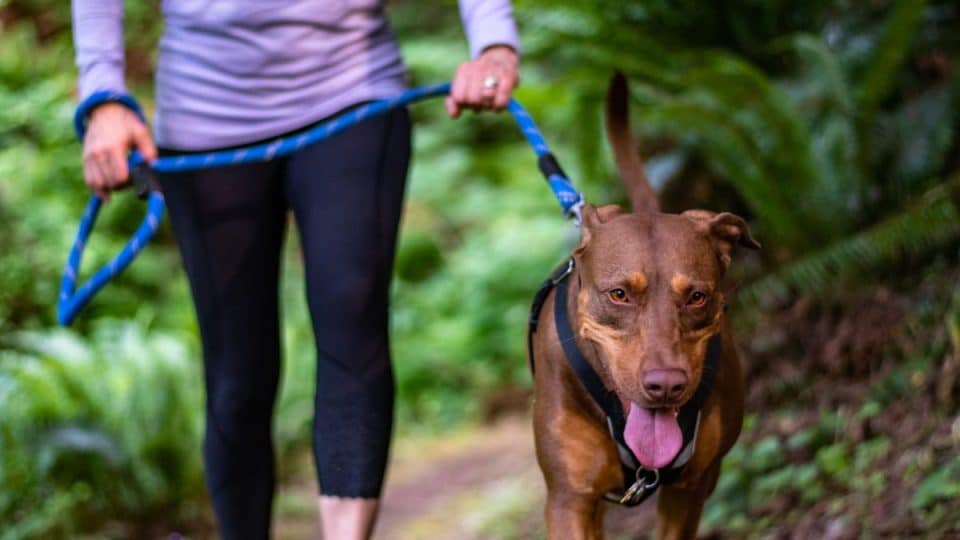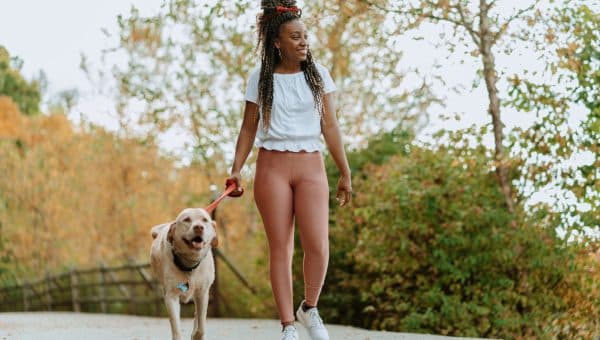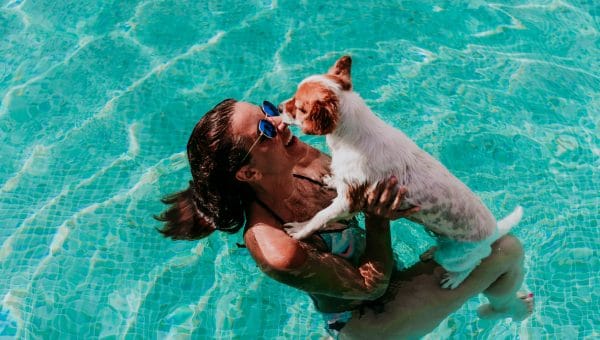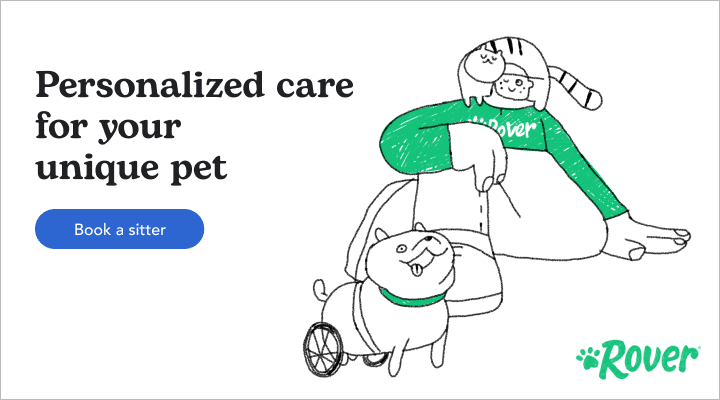- This post contains affiliate links. Read more here.
- Not a substitute for professional veterinary help.
It used to be a no-brainer: When your dog needed a walk, you just clipped a leash to their collar and went on your way.
But these days, experts say a leash attached to a harness provides a better, safer, and more comfortable walking experience than clipping in to a collar.
“In a pinch, using a collar and a leash is fine,” says Mo Lynch Vashel, a senior dog trainer with Wag It Better in Murfreesboro, Tennessee. “But harnesses provide a better long-term solution for walking your dog.”
From curbing pullers to enhanced safety, experts explain why.

Clipping in to an O-ring on the front of a harness can help prevent your dog from pulling on walks. This dog is wearing Rover Gear’s Better Walk No-Pull Dog Harness.
Harnesses Are an Effective Training Tool
Pamela Brown, a certified dog trainer in Norwood, Massachusetts, and owner of Down4Paws, says harnesses are an effective way to teach your dog how to walk calmly on a leash.
“Using a collar is essential for identification purposes [i.e. where you put your dog’s ID tags], while utilizing a harness provides additional safety benefits,” says Brown, who prefers front-clip dog harnesses that minimize how much a dog can pull on their leash, while also allowing for gentler walks.
“These discourage pulling by gently guiding the dog’s movement toward the owner,” she says. “Back-clip harnesses can make dogs feel restricted by the leash, encouraging them to pull even more.”
Her go-to pick? “I recommend the Easy Walk No Pull Harness to my clients who want to minimize pulling behaviors and promote more controlled walks.”
Harnesses Are Better for Pullers
When it comes to pulling, Vashel says harnesses also protect a dog’s trachea. In contrast, using a flat collar and leash can put a lot of stress on your pup’s spine and the nerves around their neck if they have a tendency to pull.
“Little dogs under 25 pounds, and breeds including Pugs, Frenchies, and Boston Terriers are especially susceptible to a collapsed trachea,” Vashel says. “Continuous wear and tear and pulling on a leash puts pressure on their necks, and results in breathing problems.”
For dogs under ten pounds Vashel prefers the Sense-ation Front-Clipping harness and for dogs over ten pounds, she recommends the Easy Walk harness.

Dog Trainer Nicole Ellis’ two dogs, Rossi (left) and Maggie (right), never leave home without their harnesses. They are pictured here wearing the Blue-9 Balance harness. Photo courtesy Nicole Ellis
Harnesses Are Safer for Dogs of All Ages
Shelly Phillips, a Marion, North Carolina-based certified dog trainer and canine fitness coach with Atlas Assistance Dogs, says harnesses work especially well with puppies and dogs who haven’t yet learned to walk on a loose lead without pulling. She notes that harnesses are also safer when used on large dogs who may be tempted to chase squirrels or who react to other dogs.
“Anytime a dog comes to an abrupt stop on a collar they risk a neck injury,” Phillips says. “Studies have shown that collars, even those that are padded or have a wide fitting, don’t provide a low enough pressure to reduce soft tissue damage or other neck related injuries.”
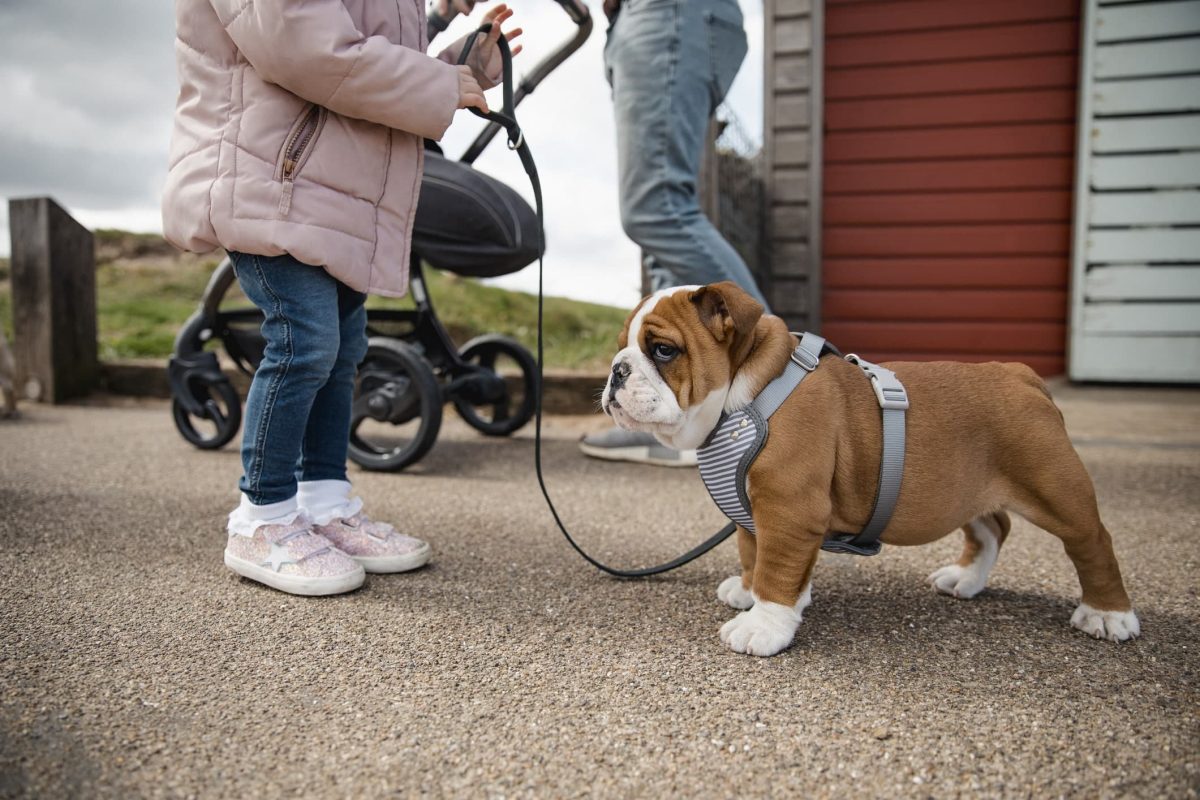
Harnesses work especially well with puppies who haven’t yet learned to walk on a loose lead without pulling. We think this puppy will get the hang of it. Photo credit: iStock/SolStock
For bigger dogs, Phillips says a harness gives the handler more control, and for dog owners with limited mobility or balance issues, this can prove to be invaluable. She advises harnesses that feature two attachment points: one on the dog’s back for leisurely strolls (often this is called a “D” or “O-ring”) and one at the dog’s chest (usually an “O-ring”) that prevents the dog from pulling.
She says Atlas recommends the Blue-9 Balance harness, or any of the Y-shaped harnesses that don’t put stress on your dog’s shoulders or impede their front limb movement.
“The snap clips are easy to work, and they have rings on the back and front of the harness so that a leash can be attached to the front for more control or on the back for relaxed walks,” Phillips says.
Harnesses Are a Game Changer
Nicole Ellis, a Certified Professional Dog Trainer (CPDT-KA) and Rover Dog People Panelist based in Altadena, California always uses harnesses when walking her dogs.
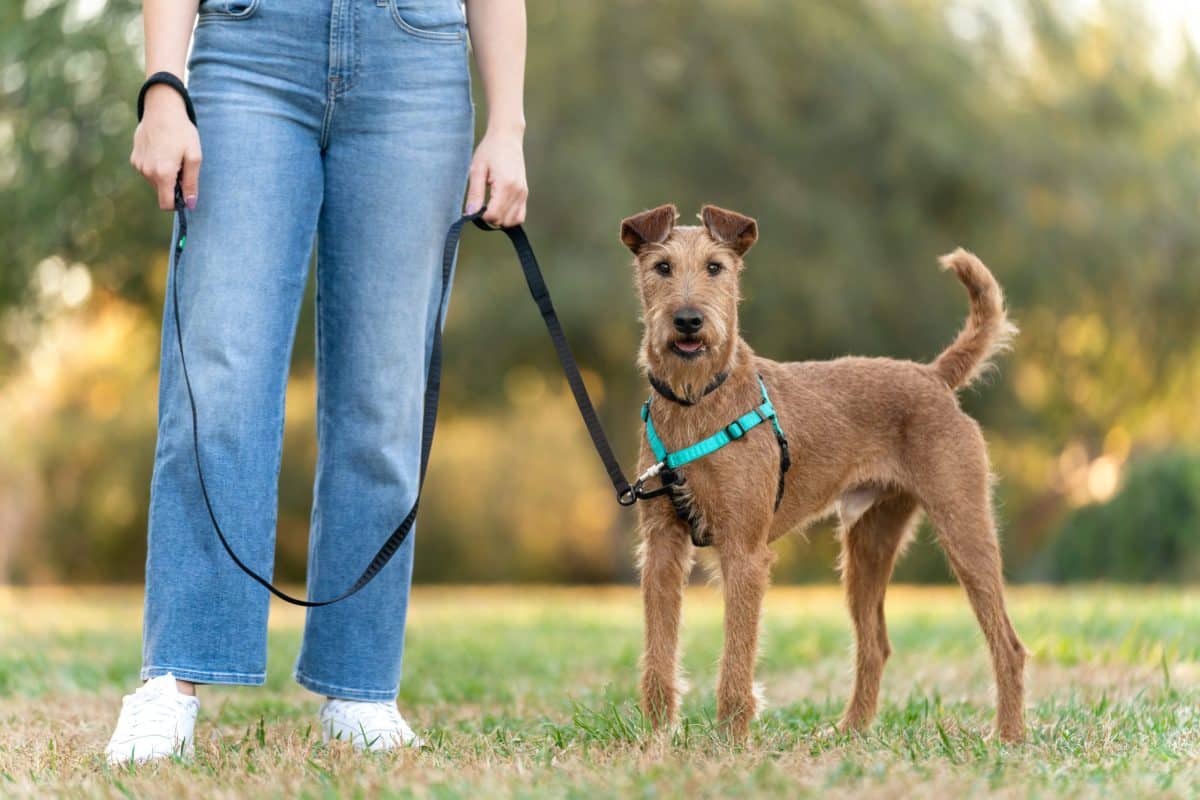
A dog wearing Rover Gear’s Better Walk No-Pull Dog Harness with O-ring in the front and D-ring on the back.
“Whether you have a feisty puppy or a senior canine companion, harnesses are a helpful training aid as well as a game-changer when it comes to preventing injuries and quick pet escapes,” she says.
Since harnesses distribute the force more evenly across a dog’s chest and shoulders, Ellis says they’re effective in reducing the risk of neck-related issues.
“Harnesses are particularly useful for dogs that are strong, prone to pulling, or are easily distracted,” she says. “With a harness, you can guide your dog’s direction without causing them harm or discomfort.”
Ellis recommends avoiding harnesses that cut across your dog’s shoulders blades, restricting their gait and movement. and leading to mobility issues down the line.
She advises choosing a harness that has a Y-shaped front and doesn’t cut across their body in a T shape.
“My go-to is the Rover Better Walks harness,” Ellis says. “I love the multiple adjustment points and how easy it is to place on dogs. It doesn’t affect their gait and offers both a front and back D-ring.”
She also likes the Blue-9 Balance harness that features a buckle for dogs who don’t like harnesses placed over their head.
“The best harnesses don’t impede your dog’s gait, and offer multiple clip points and adjustments,” Ellis says. “A well-fitted harness wraps around your dog’s chest and offers adjustable straps for a secure fit, reducing the likelihood of your dog slipping out and getting loose.”
